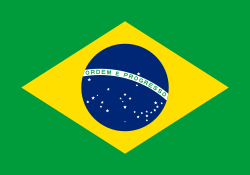Rymdraket

Rymdraket eller bärraket är en raket som används för att sända iväg rymdfarkoster bort från jordens atmosfär.
Rymdraketen utvecklades mycket genom pionjärarbetet av Konstantin Tsiolkovskij. Hans teoretiska skrifter inspirerade andra mer pragmatiska utvecklare som Robert Goddard och Hermann Oberth. Men den egentliga utvecklingen av raketer kom inte på gång förrän Verein für Raumschiffahrt (Rymdfärdssällskapet) bildades 1927 i Breslau i Tyskland.
Den första rymdraketen sköts upp 3 oktober 1942 från Peenemünde under ledning av generalmajor Walter Dornberger och Wernher von Braun. Den utvecklades under A-serien där den aktuella raketen tillhörde A-4 men mer känt som V-2. Raketen nådde dock aldrig rymden.[1]
Efter slutet på andra världskriget tog utveckling fart av raketer i både USA och Sovjetunionen. Från slutet av 1950-talet kastade de båda länderna in sig i en rymdkapplöpning som kulminerade 1969, då USA genomförde den första bemannade månlandningen. Astronauter drabbas med få undantag av rörelsesjuka, även kallad rymdsjuka.
Sverige har, sedan 1973, aktivt deltagit i den europeiska ansträngning genom bland annat ett deltagande inom bärrakets projekten Ariane. Europa saknade då egna raketer för att skjuta upp satelliter till geostationär bana. USA som i över ett decennium hade haft militärt utvecklade raketer för detta ändamål vägrade att skicka upp kommersiella europeiska satelliter, som kunde konkurrera med amerikanska intressen.
År 2001 beslutade ESA att öka lyftkapacitet från 7,5 till 10 ton och slutligen till 12 ton för Ariane, vilket marknaden efterfrågar varför Ariane 5 under några år blev marknadsledande. En roll som senare övertogs av SpaceXs Falcon 9.
Amerikanska rymdraketer
- Antares
- Athena I
- Athena II
- Atlas
- Atlas 2
- Atlas 3
- Atlas V
- Atlas G/Centaur D-1
- Delta II
- Delta III
- Delta IV
- Electron
- Falcon 1
- Falcon 9
- Falcon Heavy
- Juno I
- Juno II
- Minotaur I
- Minotaur II
- Minotaur III
- Minotaur IV
- Minotaur V
- Redstone
- Rymdfärja
- Saturn I
- Saturn IB
- Saturn V
- Titan II (raket)
- Titan III
- Titan IV
Europeiska rymdraketer
Indiska rymdraketer
Japanska rymdraketer
Kinesiska rymdraketer
Ryska/sovjetiska rymdraketer
Se även
- Återanvändbara rymdfarkoster
Källor
Fotnoter
- ^ ”Vem byggde den första rymdraketen?”. Illustrerad vetenskap. http://illvet.se/teknologi/raketer/vem-byggde-den-forsta-rymdraketen. Läst 14 mars 2016.
Media som används på denna webbplats
Kanadas flagga, införd 1965; denna version med Pantone‐nyanser. Nuvarande utformning ersatte den tidigare kanadensiska Red Ensign.
The Flag of Europe is the flag and emblem of the European Union (EU) and Council of Europe (CoE). It consists of a circle of 12 golden (yellow) stars on a blue background. It was created in 1955 by the CoE and adopted by the EU, then the European Communities, in the 1980s.
The CoE and EU are distinct in membership and nature. The CoE is a 47-member international organisation dealing with human rights and rule of law, while the EU is a quasi-federal union of 27 states focused on economic integration and political cooperation. Today, the flag is mostly associated with the latter.
It was the intention of the CoE that the flag should come to represent Europe as a whole, and since its adoption the membership of the CoE covers nearly the entire continent. This is why the EU adopted the same flag. The flag has been used to represent Europe in sporting events and as a pro-democracy banner outside the Union.Flag of Iran. The tricolor flag was introduced in 1906, but after the Islamic Revolution of 1979 the Arabic words 'Allahu akbar' ('God is great'), written in the Kufic script of the Qur'an and repeated 22 times, were added to the red and green strips where they border the white central strip and in the middle is the emblem of Iran (which is a stylized Persian alphabet of the Arabic word Allah ("God")).
The official ISIRI standard (translation at FotW) gives two slightly different methods of construction for the flag: a compass-and-straightedge construction used for File:Flag of Iran (official).svg, and a "simplified" construction sheet with rational numbers used for this file.
bendera Indonesia
MAVEN at Mars, Artist's Concept. This artist's concept depicts NASA's Mars Atmosphere and Volatile EvolutioN (MAVEN) spacecraft near Mars. MAVEN is in development for launch in 2013 and will be the first mission devoted to understanding the Martian upper atmosphere. The mission's principal investigator is Bruce Jakosky from the Laboratory for Atmospheric and Space Physics at the University of Colorado.
The goal of MAVEN is to determine the role that loss of atmospheric gas to space played in changing the Martian climate through time. MAVEN will determine how much of the Martian atmosphere has been lost over time by measuring the current rate of escape to space and gathering enough information about the relevant processes to allow extrapolation backward in time.
NASA Goddard Space Flight Center in Greenbelt, Md. manages the project and will also build some of the instruments for the mission. In addition to the principal investigator coming from CU-LASP, the university will provide science operations, build instruments, and lead education/public outreach. Lockheed Martin of Littleton, Colo., is building the spacecraft and will perform mission operations. The University of California-Berkeley Space Sciences Laboratory is also building instruments for the mission. NASA's Jet Propulsion Laboratory, Pasadena, Calif., will provide navigation support, the Deep Space Network, and the Electra telecommunications relay hardware and operations.
For more information about MAVEN, visit www.nasa.gov/maven.Flag of Israel. Shows a Magen David (“Shield of David”) between two stripes. The Shield of David is a traditional Jewish symbol. The stripes symbolize a Jewish prayer shawl (tallit).

























